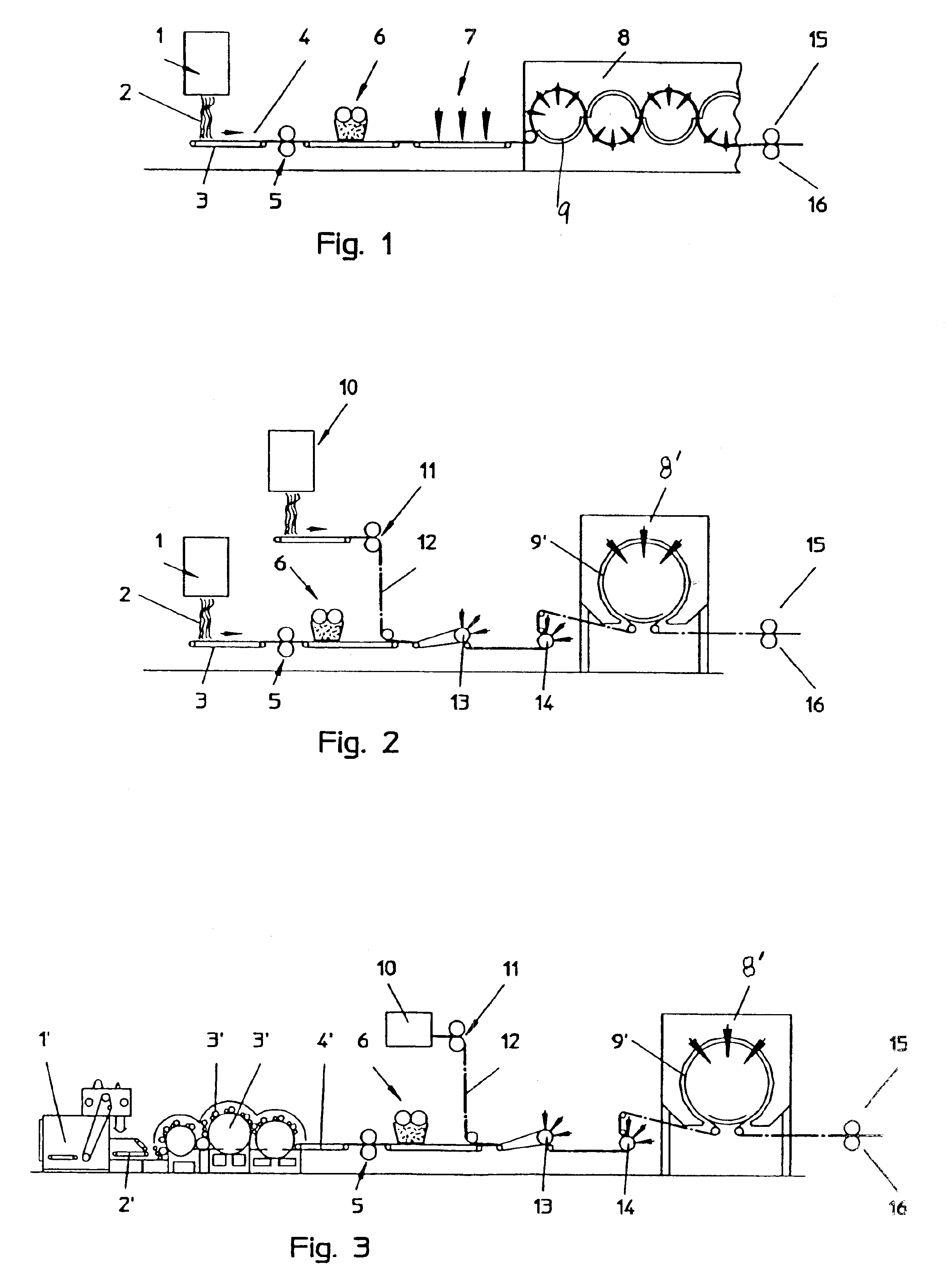Method and device for production of composite non-woven fiber fabrics by means of hydrodynamic needling
- Summary
- Abstract
- Description
- Claims
- Application Information
AI Technical Summary
Benefits of technology
Problems solved by technology
Method used
Image
Examples
Embodiment Construction
The endless fibres 2, continuously emerging from the device 1, which is substantially known and does not need to be represented in detail, impact onto the conveyor belt 3, which is running below in the direction of the arrow 4. A calender apparatus 5 is assigned to the conveyor belt 3, which calender apparatus 5, depending on what is required, supplies a strengthened non-woven fabric, which where applicable is also finely pressed, with force and heat. The calender apparatus can also be replaced by a compressed air strengthening apparatus 5′, as shown in FIG. 4. The strengthening effect should only be slight so that the pulp still enters into an internal bonding with the endless fibre non-woven fabric by means of the needling process. After this method step, the pulp fibres are applied, as is known, using, for example, a device 6 according to EP-A-0 032 772. The hydrodynamic needling process 7 is then applied to both non-woven fabric layers together, it also being possible to perform...
PUM
| Property | Measurement | Unit |
|---|---|---|
| Hydrodynamic wave | aaaaa | aaaaa |
Abstract
Description
Claims
Application Information
 Login to View More
Login to View More - R&D
- Intellectual Property
- Life Sciences
- Materials
- Tech Scout
- Unparalleled Data Quality
- Higher Quality Content
- 60% Fewer Hallucinations
Browse by: Latest US Patents, China's latest patents, Technical Efficacy Thesaurus, Application Domain, Technology Topic, Popular Technical Reports.
© 2025 PatSnap. All rights reserved.Legal|Privacy policy|Modern Slavery Act Transparency Statement|Sitemap|About US| Contact US: help@patsnap.com



